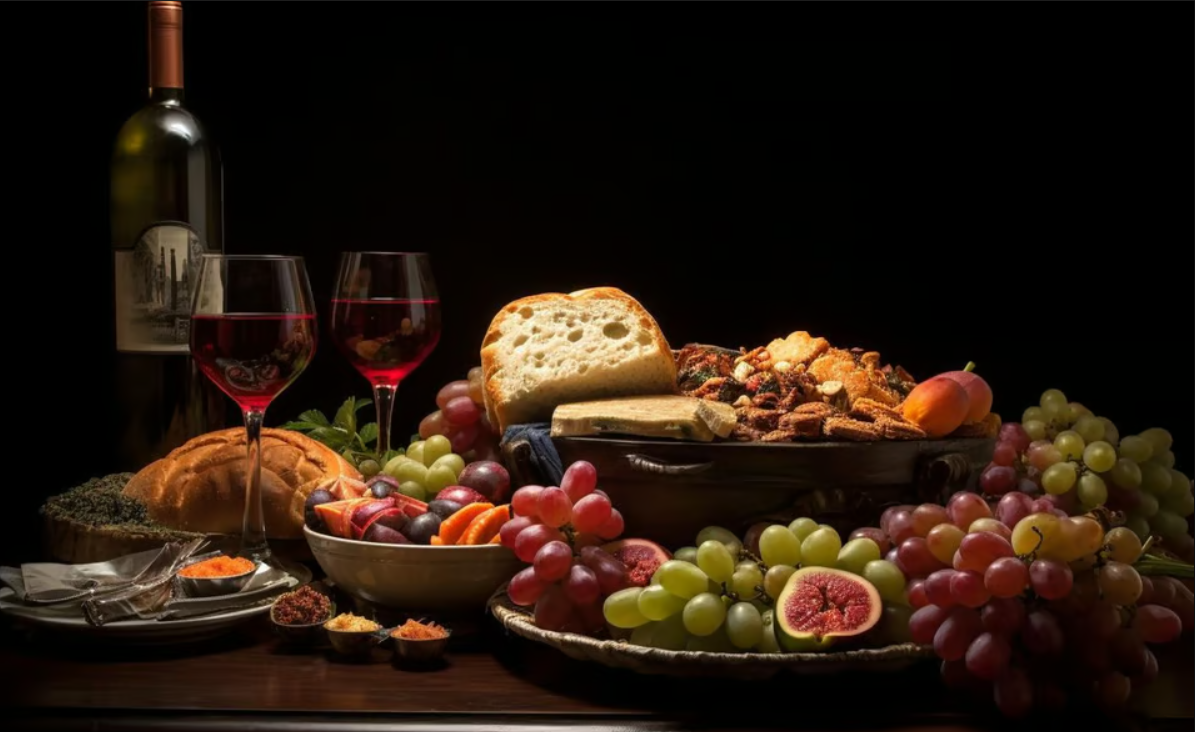Pairing wine with food is an art that can significantly enhance your dining experience. The right combination not only complements but also elevates the flavors of both the wine and the food, creating a memorable culinary journey. Whether you’re hosting a dinner party or enjoying a meal at home, mastering the art of wine pairing can transform your meals. Here’s a guide to help you navigate the world of wine and food pairings, uncovering the secrets to creating harmonious and delightful combinations.
Understanding Wine Characteristics
To master the art of pairing, it’s crucial to understand the fundamental characteristics of wine. Key attributes include:
- Body: The weight or fullness of the wine. Full-bodied wines like Cabernet Sauvignon are robust and best suited for hearty dishes, while light-bodied wines like Sauvignon Blanc are ideal for lighter fare.
- Acidity: This trait can refresh the palate and cut through rich or fatty foods. Wines with higher acidity, such as Riesling or Champagne, are great with creamy or fried dishes.
- Tannins: Found in red wines, tannins can add bitterness and astringency. They pair well with rich, protein-heavy foods like steaks.
- Sweetness: Sweet wines, like Sauternes or Port, can complement or contrast with the sweetness of dishes, particularly desserts.
Understanding these characteristics helps you select wines that enhance the flavors of your dishes.
Matching Intensity and Flavors
One fundamental principle of wine pairing is matching the intensity of the wine with the flavors of the dish. Here are some guidelines:
- Lighter wines with lighter dishes: For example, a delicate Pinot Noir complements roasted chicken, while a robust Malbec pairs well with grilled steak.
- Heavier wines with richer dishes: A rich, full-bodied wine like Syrah goes well with hearty dishes like lamb or beef stew.
Balancing the intensity of the wine with the richness of the food ensures that neither overpowers the other, resulting in a harmonious dining experience.
Considering Acidity and Sweetness
Acidity and sweetness in wine play pivotal roles in pairing:
- Acidity: Wines with high acidity can balance rich, fatty, or creamy dishes. For example, a crisp Chardonnay can cut through the richness of a creamy pasta.
- Sweetness: Sweet wines can either complement or contrast the sweetness in desserts. A dessert wine like Port enhances the flavors of a chocolate dessert, while a dry wine might provide a refreshing counterpoint.
Understanding how these elements interact can help you create balanced and delightful pairings.
Exploring Regional Pairings
Another effective approach is to consider regional pairings, based on the idea that local wines and foods naturally complement each other:
- Italian Chianti: Pairs beautifully with classic Italian dishes such as pasta with tomato sauce or risotto.
- Spanish Rioja: Complements tapas dishes like cured meats and cheeses, showcasing the synergy between regional cuisine and wine.
This approach leverages traditional pairings that have evolved to enhance the dining experience.
Experimenting with Contrasting Pairings
Don’t hesitate to explore contrasting pairings to discover exciting new flavors:
- Spicy dishes with slightly sweet wines: A spicy curry can be balanced by a sweet Riesling, creating a dynamic interplay of flavors.
- Rich dishes with sparkling wines: The acidity in sparkling wines like Prosecco can cut through the richness of fried foods, providing a refreshing contrast.
Experimenting with contrasting pairings can lead to unique and surprising flavor combinations.
Tips for Successful Pairings
To ensure successful wine pairings, keep these tips in mind:
- Match dominant flavors: Choose a wine that complements or contrasts with the main flavors of the dish.
- Balance weight: Pair wines with dishes of similar weight or intensity for a harmonious match.
- Experiment: Try different combinations to discover what works best for your palate.
Pairing wine with food is a creative and enjoyable process. By understanding the basics of wine characteristics, flavor matching, and regional pairings, you can elevate your dining experience and create unforgettable meals. Embrace the art of wine pairing and explore the rich world of culinary possibilities.
